I need to take a larger (more dense) than needed list of lidar survey points (longitude, latitude, and elevation) for terrain definition and decimate it based on a 2 dimensional grid. The idea would be to end up with points based on a NxN (i.e. 1 meter x 1 meter) dimension grid using the longitude, latitude (x,y) values, therefore eliminating the points that are more than are needed. The goal is to determine what the elevation is at each point in the grid after the decimation, not use elevation as part of the decimation rule itself.
An actual or precisely structured grid is not necessary or the goal here, I only use the grid terminology to best approximate what I envision as the remainder of the cloud of points after reducing it in a manner that we have always have a point within a certain radius (i.e. 1 meter). It is possible there is a better term to use than grid.
I would like to either code/script this myself in a scripting or programming language if I can start with a decimation algorithm or use a command line tool from a project that may already exist that can do this that can run on Ubuntu and called from our application as system call. The approach should not require using a GUI based type of software or tool to solve this. It needs to be part of an automated set of steps.
The data currently exists in a tab separated values file but I could load the data into a sqlite database file if using an database/sql query driven algorithm would be better/faster. The ideal scripting language would be ruby or python but can be any really and if there exists C/C++/C# libraries for this already then we could wrap those for our needs.
Ideas?
Update Clarifying the use of the result of this decimated list: Given a user's location (known by latitude and longitude), what is the closest point in the list and in turn its elevation? We can do this now of course, but we have more data than is necessary so we just want to relax the density of the data so that if we can find the closest point within a tolerance distance (i.e. 1 meter) if able to use a decimated list vs the full list. The latitude, longitude values in the list are in decimal GPS (i.e. 38.68616190027656, -121.11013105991036)
